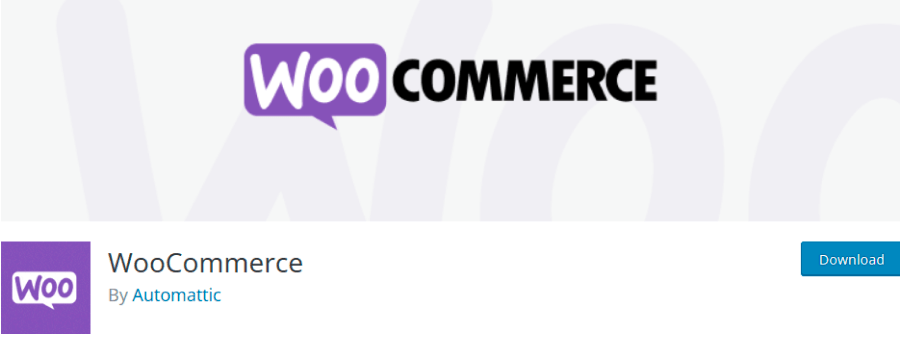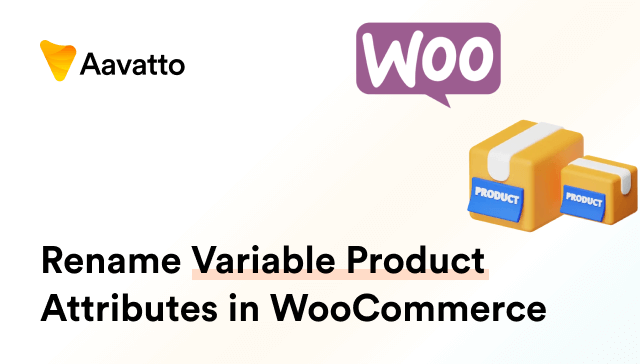
WooCommerce vs. Shopify: Which Ecommerce Platform is Better for your Online Business?
Introduction to Multi-Web Ecommerce Platforms Integration with WooCommerce and Shopify
The Importance of Integrating the Right Ecommerce platform
The cornerstone of a successful online store isn’t merely hopping on the bandwagon of the most renowned platform. Instead, it all boils down to identifying a website builder for your ecommerce site builder that synchronizes well with the unique needs of your online business. This well-rounded evaluation process often requires considering diverse elements such as value for money, compliance with PCI requirements, ironclad security, and the site’s design flexibility, along with SEO tools and SEO performance. Being on the right platform places your store in a favorable position for optimal search engine optimization and sets your online business on a trajectory for exponential growth and success.
An Overview of WooCommerce and Shopify Plugins
In the realm of ecommerce, we encounter two colossal players namely WooCommerce and Shopify. These platforms, often resembling gladiators in the online marketplace arena, battle for the title of ‘The Winner Shopify.’ Each brings to the table its own unique suite of tools and versatility, all contained within their own distinctive web pages. WooCommerce comes with its own dynamic ecommerce plugin, notably referred to as “woocommerce one,” and has the flexibility to integrate an ecommerce store within a larger website, including pages, blogs, and more, a feature that highly appeases to the WooCommerce reviews. However, Shopify does not slack on its offerings, impressing users with a seamlessly integrated online store system, not to mention its ability to load its web pages in an ideal average of 309 milliseconds. These characteristics fortify their individuality, making them straightforward to use while providing an enjoyable customization experience. Now, let’s delve deeper into the nuances and offerings of these robust ecommerce titans.
Diving into WooCommerce and Shopify Plugin Integration
Deciphering the WooCommerce Plugin

WooCommerce is a free, open-source ecommerce platform that effortlessly integrates with WordPress, the globe’s leading content management system. Impacting around 6.5 million stores and a part of the WooCommerce extensions store, WooCommerce is no less than a marvel, working its magic to transform any WordPress website into an efficient online store. Visit the unique WooCommerce themes store to witness its effect. While Shopify hosts a larger App Store, WooCommerce stands out with specific, albeit fewer, essential plugins tailored for varying ecommerce needs.
Endowed with the basics, the WooCommerce setup wizard lends full control to its users for any desired site design modifications and code edits. Furthermore, unlike Shopify’s set pricing, a significant strength of WooCommerce is its pricing flexibility, offering users more control over their costs. With functions like WooCommerce checkout, it enhances the user experience, making WooCommerce a go-to option for many.
Understanding the Shopify Plugin

Shopify, established in 2006, is recognized as a comprehensive ecommerce solution. The platform’s seamless squarespace and striking ecommerce website themes have attracted about two million users worldwide and numerous vendors. The service stands out with its economical $5 starter plan and comprehensive Shopify pricing plan. These cater to entrepreneurs keen on social media selling and also to those who wish to run an online store without worrying about the added hassles of third-party hosting or plugins. With Shopify, you get an all-inclusive package from hosting and domain purchase to the store setup, thus removing the usual hurdles of starting an online venture. The Shopify setup allows vendors to showcase their wares across various platforms. These include online stores, physical retail locations, social media platforms, and marketplaces such as AliExpress and Oberlo, offering a consistent and effective operation. Moreover, Shopify’s added feature – the abandoned cart option- ensures your potential sales don’t slip through the cracks.
Evaluating Similarities and Differences between WooCommerce and Shopify Plugins
Bearing a common endgoal – facilitating online sales for merchants – both WooCommerce and Shopify offer a list of similar features. They empower businesses with centralized inventory, order management, and customer data, ensuring a cohesive and efficient operation across all channels. However, it’s vital to note that these platforms, WooCommerce and Shopify, are vastly different in terms of how they handle user experiences and product reviews. Shopify is famous for offering complete and integrated solutions that champion efficiency and simplicity, even when migrating data from another store using services like LitExtension. Conversely, WooCommerce, a WordPress plugin, prides itself in handing over the reins to the users, with WooCommerce reviews and star rating options, offering comprehensive control and customization potential.
User Experience Setup and Integration
Getting Started with Multi-Web Integration in WooCommerce and Shopify
Ease of set-up and user experiences greatly vary when comparing WooCommerce and Shopify. Shopify, with its entire service package that incorporates speedy hosting, domain acquisition, and WordPress installation, takes the lead in setting up an ecommerce store effortlessly. This experience is equivalent to filling out a basic form.
However, trusted services such as Bluehost offer simple, one-click WordPress installation procedures, easing the process. An intricate setup here implies an opportunity for a comprehensive understanding of its powerful tools for search engine optimization and e-commerce customization in their detailed set-up wizard. This step-by-step guide successfully navigates you through crucial configurations, simplifying your task of web page creation, the utilization of ecommerce tools, and even pricing strategies.
So, choosing between WooCommerce or Shopify really hinges on your circumstances and preferences – whether you favor a quick-setup process or a comprehensive one with robust SEO tools and an extensive catalog capacity.
Ease of Use: Shopify vs WordPress WooCommerce
Unboxing the User Experience: Shopify v/s WooCommerce
When it comes to the simplicity of setting up, Shopify stands out from the crowd. It’s all about intuitive design with a user-friendly drag-and-drop interface, keeping the learning curve minimal. Code isn’t part of the equation—making it fuss-free. Your central focus rests solely on ringing up sales.
On the other hand, WooCommerce banks on WordPress and demands a steeper learning staircase. Although it requires grappling with slightly more initial configuration, it lends you a far higher level of control. This platform is for those who wish to craft a tailor-made store with a unique shopping experience.
In essence, it’s a battle between ease-of-use and bespoke design. While Shopify offers a stress-free setup process, WooCommerce empowers you with extensive customization options. Your choice would rely entirely on your comfort with technology and your business’s specific needs.
Whether you desire Shopify’s clean simplicity or WooCommerce’s detailed controls – knowing these fundamentals can help you make an informed decision.
Unveiling Features and Multi-Web Functionality
Inventory Management across Multiple Web Platforms
Managing your inventory with ease is a common feature both WooCommerce and Shopify platforms offer. Notably, Shopify excels with its included abandoned cart recovery feature, which is part of its built-in sales features to optimize your e-commerce site. Shopify not only provides real-time updates on your stock levels but also promptly alerts when inventory runs low, safeguarding your store against stock-outs and improving cart recovery.
WooCommerce stands out with its infinite capacity to generate and manage various stock items. These help integrate your WooCommerce store with top-notch online marketplaces like Amazon, ensuring all products are meticulously tracked for a seamless flow of customer data and preventing potential sales losses due to stock shortages or cart abandonments.
For those engaged in drop shipping, instant product importation, and order fulfillment plugins are incredibly beneficial, orchestrating operations right from your website, including data transfer across platforms.
Available Integrated Payment Gateways and Transaction Fees
When it comes to payment flexibility, WooCommerce emerges as a platform that isn’t skimpy at all! It allows you to manage your own merchant account and supports various notable payment gateways, including but not limited to Stripe, PayPal, and Square. Plus, it graciously caters to regional players like PencePay, without charging a penny for payment gateway use. Interestingly, WooCommerce also proposes an optional subscription to the world of WooCommerce Payments — an exclusive extension that presents even more payment alternatives, inclusive of debit and credit card payments.
Venturing into Shopify territory presents a slightly different monetary landscape. Shopify entices users with its already hosted, integrated payment gateway, fondly named Shopify Payments. This gateway remarkably lures with no transaction fees attached! But, beware of the hidden costs; if you opt for external payment gateways under Shopify, you are hit with additional payment gateway charges up to 2%, contingent on set pricing of the selected plan. UserService.setPricing($cartOption). Moreover, Shopify’s subscription combined with its gifted built-in cart option ensures you don’t miss any potential customer due to an abandoned cart. Indeed, the cart option is a fantastic revenue saver, plugging any leaks through which sales could otherwise slip away!
The Eloquence of Shipping and Dropshipping capabilities
Shopify excels when it comes to shipping capabilities, offering a plethora of features designed to streamline and enhance your ecommerce activities. With integrated sales features like abandoned cart recovery, Shopify teams up with credible couriers like USPS, DHL Express, and Canada Post, promising efficient order fulfillment at Amazon-standard consistency. The platform further broadens cart alternatives with advanced tools like Smart Order Routing and Shopify Marketplace Connect, designed to speed up delivery and elevate the vendor experience. Similarly, WooCommerce doesn’t let you down either. Its strength lies in allowing you to personalize your shipping strategy. Maybe you want to charge real-time rates or devise distinct shipping zones? WooCommerce has got you covered. Select the suitable plugins that align with your business strategy, working harmoniously with top-tier online marketplaces such as Amazon. Moreover, if traditional shipping isn’t your thing, you’re at liberty to explore dropshipping, a business model that places the vendor as a mediator between customers and inventory management system-an option also available on Shopify. So, whether it’s Shopify’s structured approach or WooCommerce’s flexibility that captivates you, both platforms serve your shipping needs with distinction while providing effective cart recovery solutions.
Prioritizing Design Flexibility and Customisation in Web Integration
Levels of Customisation for Multi-integrated WooCommerce and Shopify Stores
When assessing the levels of customisation for WooCommerce and Shopify stores, both platforms showcase distinct capacities. WooCommerce manages to stand out as a powerhouse for unrestricted customisation. By providing access to the entire coding layout, you get the freedom to tweak everything from design to URL paths. It curbs the limitations of conventional website builders that may confine your virtual store within rigid themes. This feature paints WooCommerce the perfect choice for those who love to fine-tune each detail.
On the other hand, Shopify arises as a user-friendly website builder designed with simplicity in mind. It offers limited theme customisability, leading to some themes being completely non-adjustable. Add to this, Shopify’s rigid URL path structure, and it limits the scope for deep-seated personalisation. Nonetheless, Shopify shines in providing straightforward SEO information updates, making it easy to optimise your store. Whether your preference leans towards sculpting every aspect of your online storefront with WooCommerce, or you find comfort in the simpler, restricted customisation offered by Shopify, the choice largely circles around your personal preference and technical acumen.
The Array of Theme and Design options in WooCommerce and Shopify
When considering design and customisation capabilities, WooCommerce and Shopify have different approaches towards their themes and designs. WooCommerce champions “unrestricted customization” with an extensive layout selection of over 1,000 themes available directly from the WordPress directory, not even including the countless extra themes from external marketplaces like ThemeForest enhanced by website builders. In contrast, Shopify, functioning more like a selective website builder, offers a limited yet high-quality selection of themes with clean layouts. Keep in mind that the top-tier Shopify theme can cost a bit more. Thus, Shopify may exchange quantity for carefully curated premium quality, providing an exclusive compilation of superior themes. Be sure to keep search engine optimization (SEO) in mind when choosing a theme as it is crucial to drawing customers to your virtual shelves.
Cost Analysis: Ecommerce Platform Integration Pricing
Pricing Breakdown of WooCommerce vs. Shopify Integration
When it comes to costing, WooCommerce may seem appealing as it doesn’t demand an upfront fee. However, bear in mind the set pricing for web hosting and a domain name. This subscription plan includes necessary add-ons such as third-party hosting, themes, and plugins, aiding in efficient budgeting.
But remember, as your online enterprise scales up, with growth comes added costs. Expenses might surge due to premium themes or transaction fees for external payment gateways, and there might be scaling costs linked to unused resources within Shopify’s pricing plans.
Taking into account another aspect of pricing, both platforms offer diverse incentives to charm customers. Shopify enables the creation of discount codes. In contrast, WooCommerce offers the ability to generate coupon codes. Both options incorporate costs into their respective pricing plan or set pricing, providing a unique customer incentive, but it’s important to factor this into your choice of an eCommerce platform.
Assessing the Value for Money – Which Integration Provides Better Value?
When comparing value for money in the realm of e-commerce platforms, WooCommerce emerges as the top contender. Notwithstanding some additional expenses, the superior flexibility and freedom that WooCommerce offers underscore its competitive edge in providing value.
In contrast, Shopify comes with its own set of compelling benefits. Known for its simplicity and extra features, Shopify is nonetheless more costly. Over an extended period, these extra costs can accumulate, adding significantly to your overheads.
Considering both platforms, it becomes clear – if you prioritize flexibility and control over your budget, WooCommerce might be your best bet. But if you’re seeking simplicity and are willing to handle a higher cost, Shopify could win your favor.
Comparing WooCommerce and Shopify, each platform presents its unique strengths. However, the deciding factor will ultimately align with your specific business needs and budget.
Ensuring Help and Support during Integration
Support Guaranteed for WooCommerce Integration Users
When it comes to help and support, WooCommerce decidedly leans on its vivacious community. Despite not offering a traditional chat support or email support system, WooCommerce proves its robustness through a different approach. Forget about a dedicated tech support hotline to dial. Instead, envision a thriving global marketplace filled with tech-savvy enthusiasts ready to assist. Users are encouraged to delve into the dynamic, public support forum where they can exchange insights and seek advice—akin to a manual for community-provided solutions. In addition to this, a comprehensive selection of documentation is available for those who prefer a self-navigated route. For a comprehensive experience, connecting with the talented minds in the worldwide Slack WooCommerce Community is just a click away. And if you find yourself in turbulent waters in need of a seasoned captain, WooExperts are always available at certain costs. Remember, they might not provide chat support, but their expert guidance could be instrumental! Please continue to use these resources—the forum, the well-crafted WooCommerce documentation, and the WooCommerce Community on Slack for enlightenment. WooExperts are just another valuable resource for you, though keep in mind costs may apply.
Navigating Help and Support for Shopify Users
Support is never far off for any Shopify user. Available 24/7, their robust customer service, recognized for excellent chat support, acts as a steadfast companion, ready to tackle your needs via live chat, phone calls, or email support. Prefer to fix issues by yourself? Drop by the comprehensive Shopify. It serves as a manual with detailed guides and video walk-throughs designed to streamline your journey. The dynamic community forum is buzzing with ready answers, enhancing the self-help experience. If you fancy working with seasoned ecommerce professionals, Shopify Experts allows collaboration with approved designers and developers. Informative, light-hearted, and ever-ready, Shopify’s help and support ecosystem is intuitively designed, ensuring your online venture sails smoothly.
Security and Reliability in Integration
Security Features of Multi-Web Integrated WooCommerce and Shopify
In the world of ecommerce, the significance of security can’t be overstated. Via a comparison between WooCommerce and Shopify, we can see that while WooCommerce leverages its WordPress-based platform for its security needs, including plugins and important certificates like SSL and PCI compliance, Shopify provides a more streamlined solution. Getting started with WooCommerce means partnering with a recommended web host, like Bluehost, to ensure comprehensive security and seamless ecommerce operations.
On the other hand, Shopify takes security a step further by providing an SSL certificate the moment you sign up, embodying dedication to safety from your store’s very birth. With Shopify’s PCI-DSS compliance, you can trust that your transactions are secure and fraud risks are well-managed, which could have a positive impact on your store’s SEO performance. Notably, Shopify sets itself apart by automating the management of security and compliance issues, which might be a point worth pondering when choosing a website builder.
A comparative examination reflects that while Shopify provides a more robust built-in security system, WooCommerce users may require extra effort and resources to reach a similar security standard. Regardless, each platform brings secure ecommerce operations to the table, the choice finally boiling down to what best complements your online business’s unique requirements.
Uncovering the Uptime Reliability for Both Platforms
Ecommerce stores, which cater to customers round-the-clock, should guarantee uninterrupted availability. Shopify shines in this area, extending an almost perfect uptime – about 100%. It’s no wonder they’re a trusted partner of millions of merchants!
WooCommerce’s uptime is a slightly trickier area to evaluate, chiefly because it’s contingent on the chosen hosting provider. However, here’s a silver lining – top-tier hosting services like Bluehost and SiteGround have paired well with WooCommerce, delivering a high uptime track record. Shopify’s uptime WooCommerce’s uptime
Exploring SEO and Marketing Capabilities in Multi-Web Integration
SEO Friendliness – A Tale of WooCommerce versus Shopify Integration
However, in terms of SEO performance, WooCommerce manages to edge out a bit ahead. Why, you ask? Well, WooCommerce offers more control over URLs, a distinctive SEO information-rich feature that not many platforms can boast about. Furthermore, it houses a wide variety of search engine optimization plugins. These factors together pave the way for a more optimized SEO structure, creating a competitive edge.
Yet, don’t count out Shopify just yet. This platform, although perhaps offering fewer apps, boasts unique, integrated SEO features that drive performance. For a good number of users, this SEO information and functionality is enough to meet their business needs. They appreciate the simplicity and ease of use that Shopify brings to search engine optimization. So, while each platform has its edge, the choice largely hinges on your specific business SEO performance goals.
Marketing Tools: Features Available in Both Platforms
When it comes to marketing features and tools, both WooCommerce and Shopify have impressive offerings. Shopify provides a comprehensive suite of marketing tools, including email marketing, automation, multichannel selling, and where needed, tutorials. It proudly sports an advanced analytics dashboard, expediting the interpretation of basics like conversions and clicks. The platform’s multitude of apps and plugins amplify its analytical and marketing prowess, reinforcing its stand as a formidable competitor in the ecommerce battle.
On the other side, WooCommerce, leveraging its close-knit relationship with WordPress and supplemented by SEO information, presents an appealing edge, particularly in SEO and marketing. Its arsenal of plugins like Mailchimp, Omnisend, and Google Ads unfold in-depth analytics, streamlining blog post creation and marketing chore.
Although it’s a stiff competition, these superlative features confer WooCommerce as the victor in this specific bout.
Summarizing the WooCommerce vs Shopify Integration
Cases where WooCommerce Plugin Integration might be a Better Option
In the Battle of E-Commerce Warriors: WooCommerce vs Shopify, Instances When WooCommerce Emerges Victorious
In the dynamic world of e-commerce platforms, two mighty warriors- WooCommerce and Shopify beseech your attention. Yet, there are situations where the WooCommerce extensions store claims superiority. Let’s delve into these instances that might tilt the scale in favor of WooCommerce.
- The existence of prior familiarity with the WordPress ecosystem often makes WooCommerce an ideal pick. It not only empowers you to harness the power and flexibility this platform offers but also allows easy access to its robust catalog of extensions.
- A penchant for coding and an insatiable thirst for customization make WooCommerce a delightful canvas to create your online store, using a myriad of data-driven extension tools.
- If SEO and avant-garde marketing strategies, backed by relevant data, form the cornerstone of your growth plans, then WooCommerce is your faithful ally.
- Your compass points towards scalable and cost-effective e-commerce solutions? Then, look no further than WooCommerce. Its scalability sets it apart from its counterparts, capable of handling the increase in your traffic, orders, and the size of your catalog.
- As an architect of an online commerce platform, if your heart yearns for a substantially customizable checkout experience, WooCommerce caters perfectly to your whims, thanks to its extensive store of extensions.
In the realm of e-commerce platforms, it’s all about matching your unique needs with the capabilities of these platforms and leveraging the data at your disposal. So, while Shopify has its merits, WooCommerce tends to shine brightly in some scenarios, particularly due to its extensive extensions store.
Instances where the Shopify Integration sparkles
Why Shopify could be your Perfect Choice
- You’re a novice with dreams of creating a unique online store from scratch. Shopify, often hailed as the winner among website builders, eases your anxieties with numerous customizable templates perfect for shaping your envisioned digital marketplace. Don’t stress – trust in the swift build time that Shopify guarantees (Insert Shopifys template source link here).
- If you prioritize security and reliability, Shopify should be your go-to. Not only does it boast robust security akin to Fort Knox, but you’ll also have access to over 8,000 highly valuable apps courtesy of Shopify’s dynamic app store – a significant asset for any ecommerce store (Insert Shopify app store link here).
- Your budget allows for some lavish spending on Shopify’s paid themes. Each one is sleek, eye-catching, and specifically designed to convert curious visitors into enthusiastic Facebook and platform buyers (Insert Shopify themes source link here).
- You value the assurance of round-the-clock support. Shopify is ever-present, offering 24/7 assistance regardless of the issue or time. Shopify’s help and support are always at your disposal (Insert Shopify support link here).
- If multichannel selling is your domain, Shopify’s scope of ecommerce features will be highly appreciated. It comes equipped with perks such as built-in blogging, unlimited customization options, and impressively, translation tools for global market adjustment. Notably, Facebook and other major platforms like Amazon, TikTok, Instagram, eBay, and Pinterest are already integrated for multichannel selling (Insert Shopify features source link here).
So, are you ready to embrace the winning experience of Shopify yet?
Answering Frequently Asked Questions on Multi-Web Integration
Is Web Integration easier in WooCommerce than Shopify?
Generally speaking, Shopify comes out tops for ease of use, especially for beginners. It is as reliable as an all-in-one, thoroughly explained plug-and-play solution found in the variety of Shopify tutorials. Conversely, WooCommerce’s integration with WordPress does present a more flexible environment but is accompanied by a recommended manual migration approach and greater necessity for hands-on management. This implies that, if you’re seeking SEO information, tutorials and guidance, WooCommerce provides a wealth of resources such as manuals, video material, and a knowledge base. Simply put, when it comes to ease and simplicity, Shopify’s native security features and detailed tutorials arguably give it the dominant position over WooCommerce for those less familiar with SEO practices.
Which platform provides a more secure integration – WooCommerce or Shopify?
When it comes to security, Shopify undoubtedly leads the pack. With its comprehensive pricing plan that covers all aspects of the online store, including robust security features, Shopify guarantees peace of mind to users. Part of its PCI-DSS compliance and integrated SSL certificate offered within its set pricing makes for a seamless and reliable solution. Conversely, while WooCommerce grants you complete control over your site, it encapsulates more personal responsibility. This includes your site’s updates and backups—which entirely become your responsibility and can be implemented via plugins. Despite WooCommerce’s flexibility and potential cost-saving ability, Shopify’s integrated security features in its subscription offer a more bulletproof approach towards a safer online business platform.






